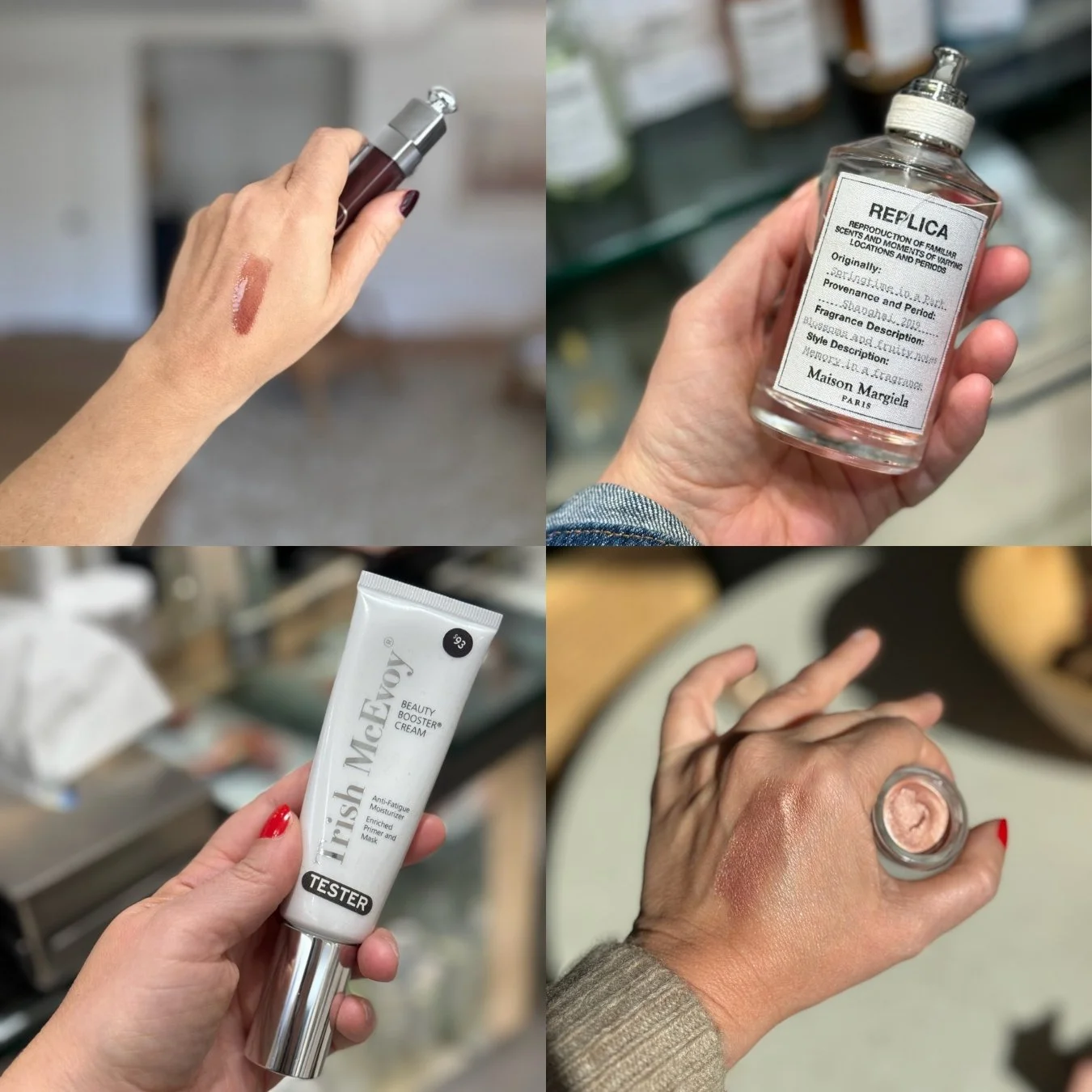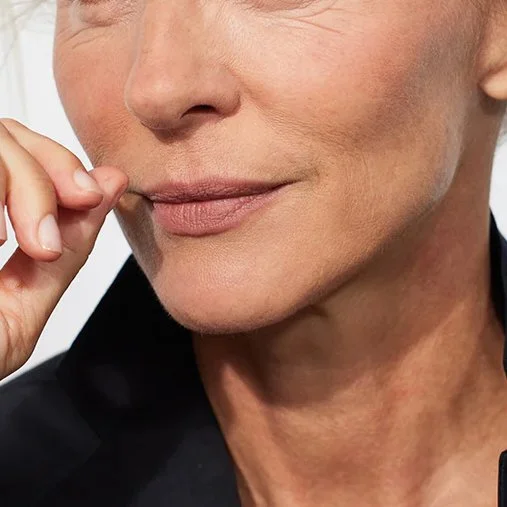Fashion Trends Are Lying To Us. Here's How.
by Marissa Pomerance
This is something we all inherently know, right?
How many of us non-glamazons are going about our daily lives wondering what Pierpaolo Piccioli is going to create for the next Valentino show? And yes, we lust after Valentino bags when we see them in stores or draped over some impossibly perfect shoulder, but we know that trends trickle down from the runways to department stores to our local outlet, where we no doubt fish them out of some clearance bin. But regardless, it feels like what happens on the Parisian runways or in the pages of Vogue has little to do with us.
Here are a few apparent “trends” from the Spring 2020 runways, straight from the mouths of the Fashion gods:
Don’t they make for breathtaking runways shows?
But can you picture yourself wearing ANY of those trends in your regular, daily life, let alone in any situation ever, without someone asking if you need to be taken somewhere? I mean, we’re all just trying to wear cute clothes that fit well, and make us feel good.
So we’ve given this some thought. We really wanted to figure out why trends feel so…out of touch…for most of us. We have a few theories:
1. Trends Are Made To Be Exclusive
Fashion is exclusive. That’s not a secret. It’s always been mostly made for thin, rich, white women, and the idea that women with “different” body types/ages/ethnicities/races/religions also want to wear clothes still feels new to the fashion industry. Oh, you’re not a size 2 but you would prefer to go to work fully clothed, not naked or in baggy men’s sweats? Who knew?
But often, when we’re shopping for real-life clothing, sorting through an endless array of insane hemlines, random cut-outs, and silhouettes made to look great on a hanger and not an actual human body, we forget that exclusivity is actually the goal, not just an unfortunate by-product. We forget that these decisions are made purposefully.
The truth is that designers want white, 24-year-olds with 0% body fat but plenty of money to spend to wear their clothes (so, like, only socialites/celebrities then?), and not older women or non-white women or women who aren’t a size 2. Which creates a semi-insane paradox in fashion, in which designers create trends for mostly young, thin women, market to them using young, thin models, and ignore the women who are often their actual customers, or women aged 35+ with the most spending power to buy their clothes.
And so the rest of us are fucked, because we’re told that these are the clothes we should be buying and wearing right now. We’re told that short shorts elongate the leg, and yet, squeezing oneself into a pair is an experience so traumatic, we decide right then and there that our bodies were not made to wear shorts. Of any kind. Ever. They make us feel naked. And childish. And usually require a great deal of huffing and puffing and squeezing and sucking in, only to feel like we’re being pinched and wedged from every angle. And Fashion knows this. They made short shorts to exclude you.
But instead of questioning the sanity of the women our own age who sent short shorts down a runway or put them in their magazines, we internalize. We wonder why we don’t look/feel good in them? Why we have zero occasion to ever wear them? Something must be wrong with our lives and our bodies; it’s our fault for not dressing cool/trendy enough. For looking “dowdy” or out of style. This is why trends are evil; they’re not made for us, but still make us question ourselves. Our bodies, our value.
2. Trends Make Us Buy Shit We Don’t Actually Like
But then what do we do when all clothes seemingly fall into two categories: fun and trendy, or classic and “boring?” We’re left with a choice between the kinds of basics and essentials that we’ve bought again and again, or the trendy, flashy pieces that inspire lust but have little purpose in our closets. And while we’re pragmatic, well-meaning shoppers, most of us choose the latter. I mean, how could we not run out and immediately buy an ill-fitting pair of straight leg jeans when we’re confronted with photos of Katie Holmes in said jeans, paired with the most mind-alteringly beautiful cashmere bra that she INDEED wore as a top?
But that’s why trends are so dangerous. Because they are so lusty. Because they are so new and different and shiny and look so good on Instagram and we’ve already seen every other piece of clothing ever made and rejected them so maybe THIS new one will be The Key to finally transforming into our ideal selves! And we honestly can’t help it; we’re programmed to desire the new.
And so we buy into each new trend, because we’re desperate to try something different. And shopping is overwhelming and confusing. And marketing. We’re tricked into buying pieces that seem incredible, but aren’t made for our bodies or our lifestyles (see point #1), and as it turns out, have nothing to do with our personal style either. Eventually, we realize that lust-worthy pair of straight leg jeans actually don’t make us feel good, they don’t go with anything else in our closets, and they don’t even fit in with our self-identities, rendering them virtually useless.
So we start to resent our clothes, and realize that we’ve been buying clothes that we don’t really like after all. I mean does anyone actually LIKE a pleated pant, which we've all succumbed to buying at one point or another, and which give us extra puffs of volume in areas where we would never want said puffs of volume? Plus, once that trend inevitably dies (as is the point of all trends), we’re left with a closet of “passé” clothes we’ve worn “too many” times (*cough* 3 times) to be seen in again, leading us to hate our clothes so much, we want to burn them to the ground.
3. Trends Encourage Endless Cycles of Consumerism
If it feels like trends are changing at an exponentially faster rate, that’s because they are. Trends always seem so organic, as if they were naturally birthed from a single, remarkable moment (like a movie, or a celebrity on a red carpet), and grew naturally in exposure and popularity.
This is a fantasy.
Here’s an insider tidbit the fashion industry doesn’t want you to know; until recently, most trends were forecasted by companies who released encyclopedic guides predicting which fabrics, colors, silhouettes, and patterns would be purchased by consumers in seasons to come. These books often formed the basis for designers’ collections, who brought these trends to life in a sort of self-fulfilling prophecy.
Trend-forecasting, though, has changed because of social media, which creates trends virtually overnight, allowing us to see an item on Kim Kardashian one day, and see a sad, limp, discount knock-off version on sale the next. Fast fashion companies function off of a constant stream of product drops, throwing the traditional seasonal collections out the window. By the time most of us catch up, the trend is “over,” having saturated our feeds to the point of becoming tiresome.
Of course, the impact of social media on rapidly evolving trends isn’t exactly by design, but using quickly evolving trends to encourage faster cycles of consumerism is most certainly intentional. Faster fashion has made clothing disposable, shortening the life cycle of our clothes, encouraging us to buy more.
And these rapidly increasing cycles of consumerism aren’t just terrible for the world and the environment, they now ironically seem…dated. The idea that we should be going out and buying every new thing we see on Instagram, while certainly compelling, just doesn’t seem to fit with our modern ideas of sustainability and Marie-Kondoing simplification.
Trends encourage us to get caught up in endless cycles of consumerism; they make us buy new, shiny clothes that we’re tricked into thinking we’ll like, but actually make zero sense for our bodies and lives. These trendy clothes crowd our closets, making getting dressed a daily nightmare, leading us to hate our clothes, leading us to want to buy new ones. You see? Fashion is profiting off of this cycle of confusion and misery.
4. Trends Are Impossible To Keep Up With
We are pragmatic. We’re smart. We’re busy. We’re all just trying to make good decisions. And so how the fuck are we supposed to care about what’s happening on a runway 3000 miles away or in the pages of magazines we don’t even have time to read?
The problem with keeping up with trends isn’t just that we try so hard to do it, and then are constantly disappointed by the results (ie. a closet full of clothes, nothing to wear). It’s that trends are designed to be impossible to keep up with, and then shame us for not doing a better job. For not being current or cool enough. For owning clothes that are “dated” or “out of style.” For acting like we must be deranged because we still wear skinny jeans (SO “over”) instead of the god-awful, du jour straight leg.
We’re never going to be 20 years old again. We’re not the target audience for these trends. So why are we continuing to bend ourselves into pretzels to keep up with something that is SO clearly failing to serve us in so many ways? Why should we keep caring about trends, when they obviously don’t care about us?
The obvious answer is that we shouldn’t—we should tell trends to go fuck themselves, and come back to us when they’ve done some serious self-examination.
But look, we’re not telling you to boycott your neon short shorts and pleated bra top, because we all need an occasional treat. But maybe the problem IS also kind of us. Because aren’t we the ones spending money, buying into trends, putting pressure on ourselves to keep up with this bullshit? Shouldn’t we be using our wallets to tell brands and retailers that, if they want our money, they can try to earn it? They can make us clothes that fit us—our bodies, our lifestyles, our budgets, our ideals.
I know, that sounds preachy and cliché and not the kind of platitude you were hoping for when you clicked on this, which you expected to be a scathing evisceration of whatever trend you’re hating right now (can’t the chunky sneaker just die already?). But until we stop literally buying into trends that are insane/expensive/cheaply made/make zero sense for anyone’s life, nothing will change. And isn’t that the point of all of this raging-on-the-internet? To encourage change?
Or am I just shouting complaints into the ether? Hello, Fashion? Can you hear me?
Marissa Pomerance is the Managing Editor of The Candidly. She’s a Los Angeles native and lover of all things food, style, beauty, and wellness. You can find more of her articles here.














